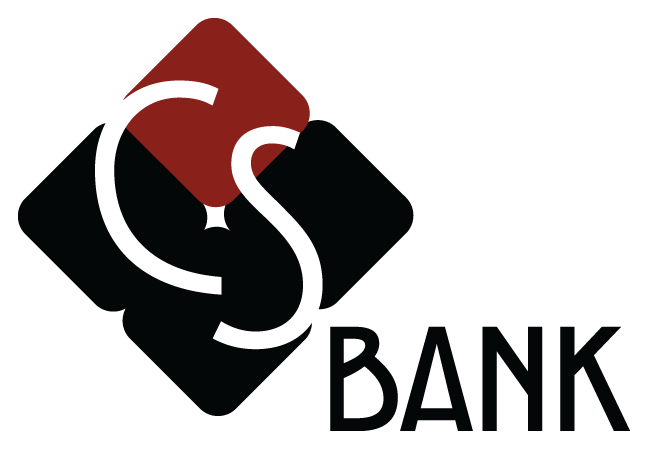not featured
2025-06-09
6/9/2025
Mortgage
published
%20(53).jpg)
What is a HELOC and How Does it Work?
With today’s high interest, finding financing with lower interest rates is more important than ever—potentially saving you hundreds or thousands of dollars over the life of your loan. Unfortunately, while easy to get and use, unsecured debt (like credit cards) tends to carry some of the highest interest rates, which can lead quickly to ballooning balances that may feel impossible to pay off.
Many homeowners look to home equity lines of credit (HELOCs) as an affordable funding option. Home equity loans can be used to finance home renovations and big ticket items, or just pay off other, high-interest debt. Secured by the equity in your home, HELOCs can help borrowers obtain those lower interest rates, while still offering flexible usage and repayment options.
If you’re a homeowner and wondering if a HELOC might be right for you, keep reading. We’ll cover many common questions you may have—from how long it takes to get a HELOC to whether or not a home equity loan is a good idea for your individual needs—to help you make the best decision for you.
What is A Home Equity Line of Credit?
A home equity line of credit, often referred to as a ‘HELOC’ (pronounced HEE-LOCK), is a form of financing similar to a credit card. Borrowers are given access to a limited credit line, borrowing funds as needed, and paying them back in initial varied monthly installments based on what they’ve currently used.
Unlike a credit card, however, HELOCs are a form of secured debt. Similar to a home equity loan, they are taken out against the equity in your home—that is, the value of your home, minus any home loans, like your mortgage. HELOCs are usually granted for up to 80 to 85% of the equity in your home. CS Bank may allow homeowners to borrow up to 100% of the equity in their home, providing certain conditions are met (Ask a lender for details). Because HELOCs are secured, they tend to have lower interest rates than unsecured loans and debts, making them a more affordable borrowing option.
Home Equity Loan vs. Home Equity Line of Credit
Although both types of lending products use the equity in your home as collateral, and both are often used for home-related expenses and improvements, their similarities end there. Home equity loans, sometimes called ‘second mortgages’, are lump sum payments that have fixed interest rates and set monthly payments over a set period of time. Terms for home equity loans can last for five years up to thirty years. Home equity loans can be used to pay for large home renovation projects with set costs, to pay off debt or a large, fixed expense, and sometimes even to pay off the balance of an existing mortgage if a more favorable rate is available.
Home equity lines of credit don’t require you to use your entire limit at once—and most people don’t. They are a great tool for financing ongoing expenses, like home improvements and renovations that stretch out over months or years, especially since you only make payments on what you’ve already borrowed. Initial payments can be quite small (and early payments are interest only). They also can work well as a backup emergency fund because you only pay interest on what you’ve borrowed—if you’ve borrowed nothing, you won’t pay any interest at all! Lastly, unlike home equity loans, HELOCs come with a variable interest rate. When interest rates are low, this may make some borrowers nervous, because they worry their rate may go up. But when interest rates are high, this can be beneficial, as you won’t be locked into a high rate for the life of your financing.
For more details about how HELOCs and home equity loans compare, check out our post, What’s The Difference Between a Home Equity Loan and a Home Equity Line of Credit?
How Does a Home Equity Line of Credit Work?
We’ve talked in general terms about different characteristics of HELOCs, and how they stand out from both credit cards and home equity loans. But HELOCs are a complex financing tool, with an unusual usage and repayment structure—and this can be confusing to first-time HELOC borrowers. Let’s take a closer look at how they work, from application to payments.
Application
Applying for a home equity line of credit is similar to applying for a mortgage. You’ll need to provide documentation of yourself (name, address, and social security number), your income, and details about your home. During the process, your lender will also perform a credit check.
Income, Debts, and Credit
Lenders need to see that you’re able to repay your loan, and that you are dependable enough to do so. Even though your home is collateral, because the process of recouping losses on a secondary home loan is even harder than a primary mortgage, you’ll still need to provide adequate proof that you’re a good candidate.
You’ll need to submit recent pay stubs, W2s, and tax returns that show that you have stable income, and that it's enough to cover all your debts, including your new HELOC. While numbers range from lender to lender, your monthly DTI (debt-to-income ratio) shouldn’t be higher than 36-43% for approval with most lenders. You’ll also need good credit—scores of 680 and higher are more likely to fetch an approval and a decent interest rate.
Finally, while most of your debts will show up on your credit report, you’ll need to submit details about all your loans and credit cards, as well as bank and investment account statements to document your cash assets.
Information About Your Home
Beyond verifying your financial information, your lender will also need to know all about the property you’re taking out the line of credit on. This will include details about who is on the deed, any liens you have on the property (loans, as well as tax liens and liens placed by contractors), and the value of your home. Unless your house had very recently been purchased, your lender will schedule an appraisal to determine how much its worth, to help them calculate your HELOC limit.
Closing
Anywhere from two to six weeks after you apply, you’ll have the closing on your HELOC. The time frame will depend on how quickly you get your documents together, how fast an appraisal can be completed, and how smoothly the whole process goes.
Like the closing when you purchased your home, you’ll be required to sign some paperwork and bring a check to cover closing costs. Fortunately, these costs will be lower than at a mortgage closing—there are no realtor fees to pay, taxes on property transfers, pre-paid utility costs, down payments, or homeowners’ insurance payments. Either at your closing or shortly thereafter, you may be given checks or a debit card to use to make accessing your HELOC funds easier and more convenient.
Like the closing when you purchased your home, you’ll be required to sign some paperwork and bring a check to cover closing costs. Fortunately, these costs will be lower than at a mortgage closing—there are no realtor fees to pay, taxes on property transfers, pre-paid utility costs, down payments, or homeowners’ insurance payments. Either at your closing or shortly thereafter, you may be given checks or a debit card to use to make accessing your HELOC funds easier and more convenient.
Draw Period
After closing, you can start using your HELOC! Use as much or as little as you like, depending on your needs and purposes for it. The initial period—when your line of credit is open and available to use—is called the ‘draw period’ or ‘draw phase’. This period often lasts 5-10 years, and during this time, as with a credit card, your monthly payment will fluctuate, depending on your usage.
Use checks, a debit card, transfers to another bank account, or cash withdrawals at your bank to access your funds during this time. You are usually only required to make payments on your interest, but keep in mind that if you pay off the principal you’ve borrowed, those funds will be replenished and accessible for future borrowing. This is what makes a HELOC a form of ‘revolving credit’—much like a credit card.
Use checks, a debit card, transfers to another bank account, or cash withdrawals at your bank to access your funds during this time. You are usually only required to make payments on your interest, but keep in mind that if you pay off the principal you’ve borrowed, those funds will be replenished and accessible for future borrowing. This is what makes a HELOC a form of ‘revolving credit’—much like a credit card.
Repayment Period
Lines of credit don’t last forever, though sometimes you may be able to renew your HELOC at the end of the draw phase. Repayment periods vary widely in length, depending on your lender, your income, and the amount you’ve borrowed. Ten to fifteen years is typical, though they can be as short as five and as long as twenty.
When your HELOC hits its repayment phase, it will become quite different. Firstly, you won’t be able to use it anymore, even if you never used all the available funds during the draw phase. Secondly, instead of interest-only payments, you’ll be required to make regular payments that include principal and interest. The amount you pay for principal will remain the same each month, but because your interest rate is variable, the total monthly payment may change occasionally.
Is a Home Equity Line of Credit a Good Idea?
That depends entirely on how the line of credit is used, and what it’s used for. There are no restrictions on how you use your HELOC, so it’s up to you to make smart spending choices.
Generally speaking, a home equity line of credit may make sense for homeowners who need to borrow money for ongoing projects, such as large home renovations. And when you use it to improve your home, your interest may be tax deductible. But of course, any renovations you complete should add value to your home—they are reasonable and are in line with the overall style and value of your home. Kitchen redos, bathroom remodels, and new HVAC, roofs, and windows are common, practical uses of
HELOC funds.
HELOC funds.
Another popular usage of home equity lines of credit is for educational expenses. Because you can use a little bit at a time, as needed, borrowers may use a HELLOC to fill in the gaps of student loans for tuition, books, and room and board over the course of a child’s college education. HELOCs can have lower interest rates than PLUS loans (loans taken out by parents for their students), and because they are so flexible, may be appealing to borrowers for this purpose. However, investigate all your options first to be sure there aren’t more affordable loans available—or ones that don’t use your residence as collateral.
HELOCs can also be used to consolidate existing debt at a lower interest rate. This can save you money when you have a lot of high-interest consumer debt, but keep in mind, old habits die hard. If you fail to repay your HELOC payments (especially when you hit the repayment phase and they may become higher) or use your HELOC to expand your debts rather than pay them off, you could be putting your home at risk. Use HELOCs for debt consolidation with caution.
HELOCs may also be used to help finance a second residence or a rental property, either to purchase the property in full or use it for a down payment. Whether or not this makes sense for you depends on your other financing options (which may be more cost-effective in the long run), and if you have sufficient income to float multiple monthly payments. In general, it’s better to cover down payments using cash—but there are lots of reasons why someone may prefer to use the equity in their existing home instead. Speak to your lender to get a better idea of your choices and determine what will work the best for your situation.
Lastly, many individuals utilize HELOCs for emergency purposes—an emergency fund that goes unused unless a specific need arises. If used sparingly and paid off within a reasonable time frame after use, this can make a lot of sense. It keeps you from using credit cards, allows you to keep paying your other bills on time, and can help float you through the occasional hardship. But it’s important to not overly rely on a HELOC for this purpose. Build an emergency savings fund at the same time to avoid interest charges on pop-up expenses, and have strict parameters for what you will use the account for, avoiding using it for everyday costs.
HELOC Alternatives
Finding the right lending product for your situation isn’t always straightforward, but could save you money, keep your home safe, or make your life simpler. In addition to a HELOC, you may also want to consider:
- Home Equity Loans—especially if you only need a one-time sum of cash or prefer fixed monthly payments
- Personal Loans, for individuals who need to borrow money but prefer not to use their home as collateral, want regular monthly payments, or other benefits.
- Cash-Out Refinance, best used to refinance your existing mortgage at a potentially better rate, while also accessing a sum of cash for your current needs
When choosing the right financing for your needs, using a Home Equity Line of Credit Calculator can be helpful. HELOC calculators allow you to quickly determine how much of a credit line you may be able to qualify for based on the value of your home and the principal remaining on any outstanding loans.
How to Get a Home Equity Line of Credit
Whether you’re on the lookout for the best ways to pay for your home reno, or need an affordable way to refinance your debt or pay for an unexpected expense, we can help. A full-service mortgage lender, CS Home Mortgage can assist you in comparing potential home loan products, from HELOCs to Mortgage Refinance, so you can find the best choice for your financial situation and needs.
To learn more about all we have to offer, reach out to one of our experienced mortgage lenders or contact your local branch location in Eureka Springs, Berryville, Harrison, Huntsville, Holiday Island, AR or Cassville, MO today!


